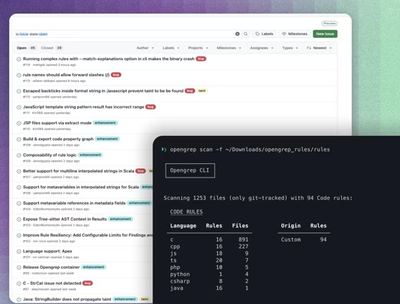
Research
Security News
Lazarus Strikes npm Again with New Wave of Malicious Packages
The Socket Research Team has discovered six new malicious npm packages linked to North Korea’s Lazarus Group, designed to steal credentials and deploy backdoors.
Skyplane efficiently transports data between cloud regions and providers.

🔥 Blazing fast bulk data transfers between any cloud 🔥
Skyplane is a tool for blazingly fast bulk data transfers between object stores in the cloud. It provisions a fleet of VMs in the cloud to transfer data in parallel while using compression and bandwidth tiering to reduce cost.
Skyplane is:
You can use Skyplane to transfer data:
Skyplane currently supports the following source and destination endpoints (any source and destination can be combined):
| Endpoint | Source | Destination |
|---|---|---|
| AWS S3 | :white_check_mark: | :white_check_mark: |
| Google Storage | :white_check_mark: | :white_check_mark: |
| Azure Blob Storage | :white_check_mark: | :white_check_mark: |
| IBM Cloud Object Storage | :white_check_mark: | :white_check_mark: |
| Local Disk | :white_check_mark: | (in progress) |
Skyplane is an actively developed project. It will have 🔪 SHARP EDGES 🔪. Please file an issue or ask the contributors via the #help channel on our Slack if you encounter bugs.
We recommend installation from PyPi:
$ pip install "skyplane[aws]"
# install support for other clouds as needed:
# $ pip install "skyplane[azure]"
# $ pip install "skyplane[gcp]"
# $ pip install "skyplane[ibmcloud]"
# $ pip install "skyplane[all]"
Skyplane supports AWS, Azure, IBM and GCP. You can install Skyplane with support for one or more of these clouds by specifying the corresponding extras. To install two out of three clouds, you can run pip install "skyplane[aws,azure]".
GCP support on the M1 Mac: If you are using an M1 Mac with the arm64 architecture and want to install GCP support for Skyplane, you will need to install as follows
GRPC_PYTHON_BUILD_SYSTEM_OPENSSL=1 GRPC_PYTHON_BUILD_SYSTEM_ZLIB=1 pip install "skyplane[aws,gcp]"
Skyplane needs access to cloud credentials to perform transfers. To get started with setting up credentials, make sure you have cloud provider CLI tools installed:
---> For AWS:
$ pip install awscli
---> For Google Cloud:
$ pip install gcloud
---> For Azure:
$ pip install azure
Once you have the CLI tools setup, log into each cloud provider's CLI:
---> For AWS:
$ aws configure
---> For Google Cloud:
$ gcloud auth application-default login
---> For Azure:
$ az login
---> For IBM Cloud:
$ Follow IBM Cloud and create an account with the resource group.
Copy https://github.com/skyplane-project/skyplane/blob/main/skyplane/compute/ibmcloud/ibm_credentials.yaml.template
into `~/.bluemix/ibm_credentials` and fill your
IBM IAM key and credentials to your IBM Cloud object storage
After authenticating with each cloud provider, you can run skyplane init to create a configuration file for Skyplane.
$ skyplane init
$ skyplane init
====================================================
_____ _ ____ _______ _ ___ _ _ _____
/ ___| | / /\ \ / / ___ \ | / _ \ | \ | || ___|
\ `--.| |/ / \ V /| |_/ / | / /_\ \| \| || |__
`--. \ \ \ / | __/| | | _ || . ` || __|
/\__/ / |\ \ | | | | | |____| | | || |\ || |___
\____/\_| \_/ \_/ \_| \_____/\_| |_/\_| \_/\____/
====================================================
(1) Configuring AWS:
Loaded AWS credentials from the AWS CLI [IAM access key ID: ...XXXXXX]
AWS region config file saved to /home/ubuntu/.skyplane/aws_config
(2) Configuring Azure:
Azure credentials found in Azure CLI
Azure credentials found, do you want to enable Azure support in Skyplane? [Y/n]: Y
Enter the Azure subscription ID: [XXXXXXXX-XXXX-XXXX-XXXX-XXXXXXXXXXXX]:
Azure region config file saved to /home/ubuntu/.skyplane/azure_config
Querying for SKU availbility in regions
Azure SKU availability cached in /home/ubuntu/.skyplane/azure_sku_mapping
(3) Configuring GCP:
GCP credentials found in GCP CLI
GCP credentials found, do you want to enable GCP support in Skyplane? [Y/n]: Y
Enter the GCP project ID [XXXXXXX]:
GCP region config file saved to /home/ubuntu/.skyplane/gcp_config
Config file saved to /home/ubuntu/.skyplane/config
We’re ready to use Skyplane! Let’s use skyplane cp to copy files from AWS to GCP:
skyplane cp s3://... gs://...
To transfer only new objects, you can instead use skyplane sync:
$ skyplane sync s3://... gs://...
You can configure Skyplane to use more VMs per region with the -n flag. For example, to double the transfer speed with two VMs, run:
$ skyplane cp -r s3://... s3://... -n 2
Skyplane will automatically attempt to terminate VMs that it starts, but to double check and forcefuly terminate all VMs, run skyplane deprovision.
Skyplane is based on research at UC Berkeley into accelerated networks between cloud providers. Under the hood, Skyplane starts a fleet of VMs in the source and destination regions. It then uses a custom TCP protocol to accelerate the transfer between the VMs. Skyplane may use a L7 overlay network to route traffic around congested network hot spots.

For more details on Skyplane, see:
FAQs
Skyplane efficiently transports data between cloud regions and providers.
We found that skyplane-nightly demonstrated a healthy version release cadence and project activity because the last version was released less than a year ago. It has 2 open source maintainers collaborating on the project.
Did you know?

Socket for GitHub automatically highlights issues in each pull request and monitors the health of all your open source dependencies. Discover the contents of your packages and block harmful activity before you install or update your dependencies.

Research
Security News
The Socket Research Team has discovered six new malicious npm packages linked to North Korea’s Lazarus Group, designed to steal credentials and deploy backdoors.

Security News
Socket CEO Feross Aboukhadijeh discusses the open web, open source security, and how Socket tackles software supply chain attacks on The Pair Program podcast.

Security News
Opengrep continues building momentum with the alpha release of its Playground tool, demonstrating the project's rapid evolution just two months after its initial launch.